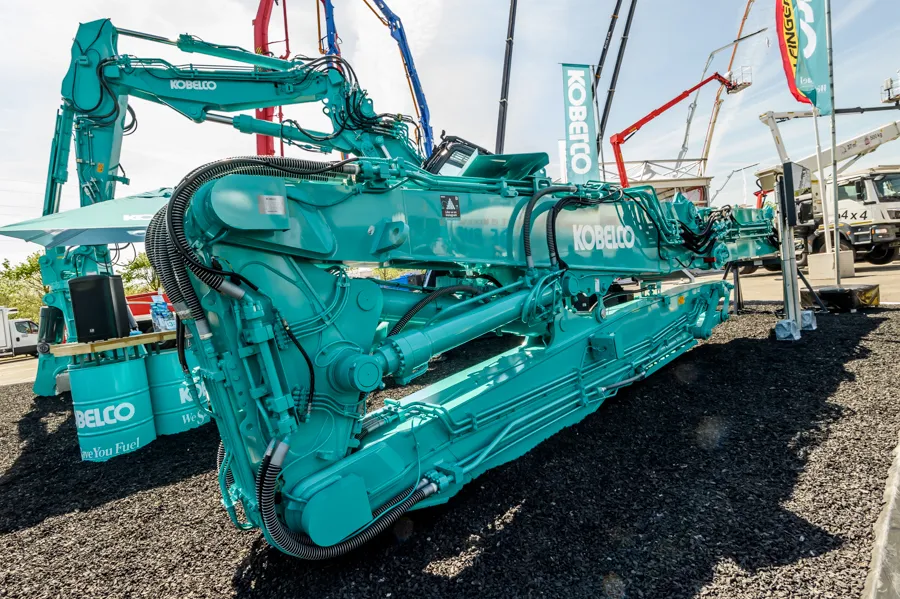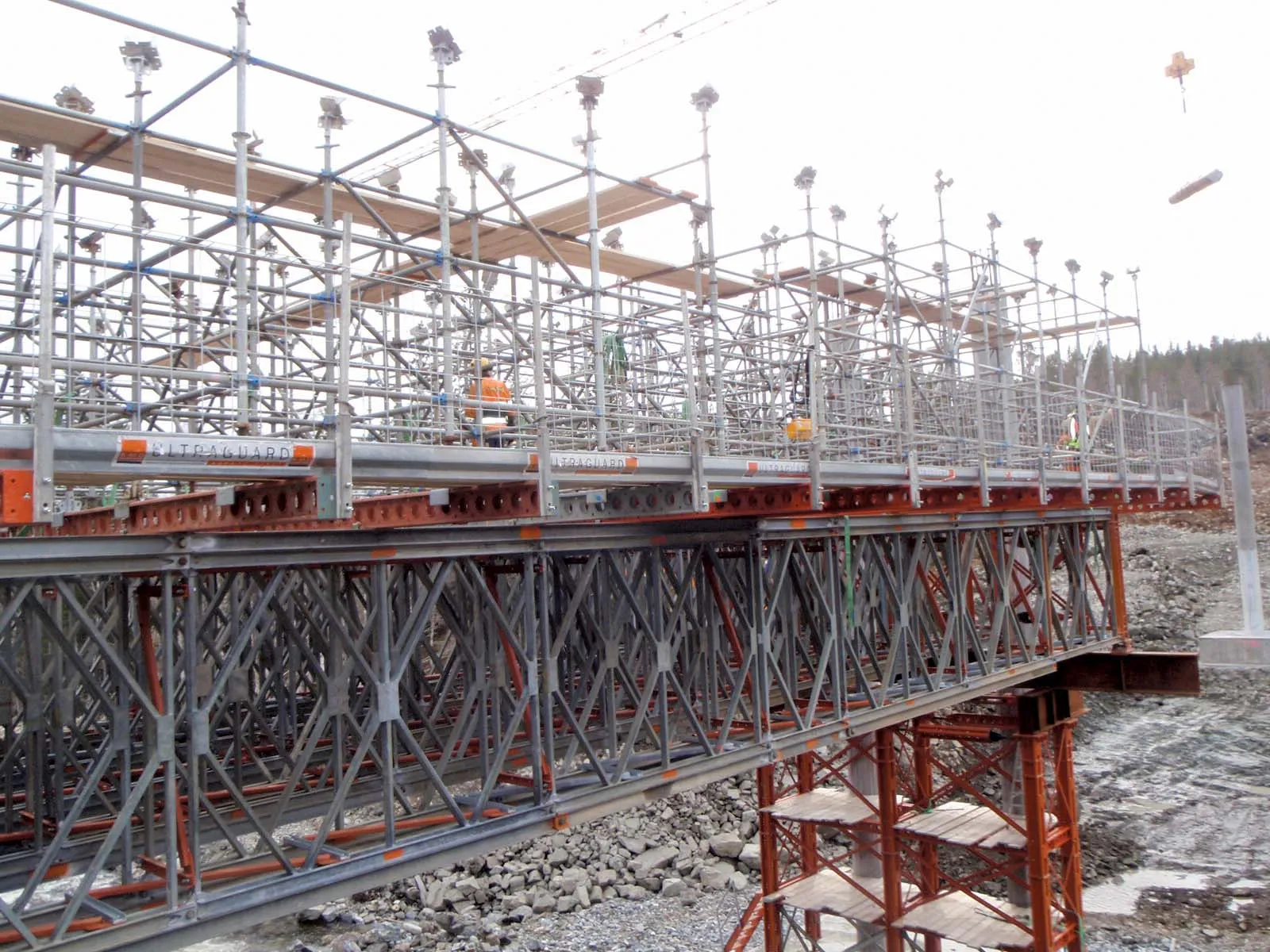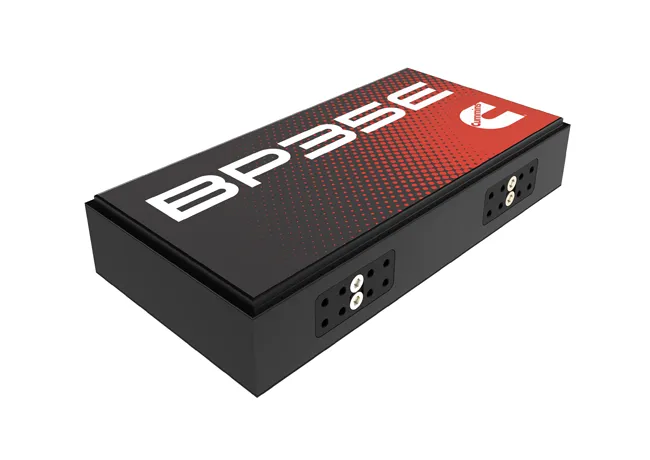The challenge of transporting the front-end equipment of high-reach demolition-spec excavators has been a key driver in the development of Kobelco Construction Machinery’s latest models, the 40tonne SK400D and 55tonne SK550D. Both offer working heights of 25m and 28m respectively from a three-piece boom.
April 25, 2018
Read time: 1 min

The challenge of transporting the front-end equipment of high-reach demolition-spec excavators has been a key driver in the development of 2200 Kobelco Construction Machinery’s latest models, the 40tonne SK400D and 55tonne SK550D. Both offer working heights of 25m and 28m respectively from a three-piece boom.
It is the intermediate boom section that has undergone a redesign, which now benefits from revised hydraulic cylinder positioning. By overlapping the cylinders in a X-pattern, engineers have found a way to fold the boom more tightly than before. This also combines with a much shorter intermediate boom piece, and the resulting transport height falls below two metres.
The firm said that this reduced overall height of the folded boom avoids the need for a specialist low-deck trailer system when getting the machines ready for transport.









